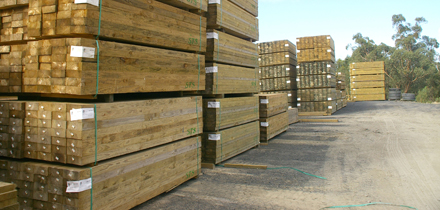Australia has seen a steady build-up of timber in timber yards across the country because the country is not making progress towards those housing targets, according to Australian Forest Products Association NSW chief executive James Jooste. Source: Timberbiz
Slow release of land, slow approval rates for loans and houses and economic factors including high interest rates have all had a major impact on timber supplies for some months.
“What’s emerged is we’ve got these ambitious targets, that we need housing, yet we’ve got timber sitting in mills, which is an indicator that that things are moving,” Mr Jooste said.
“It came on very quickly. It was probably predictable once we started to see those rate rises kick in.
“But was it sharp? Absolutely.
“We need a roadmap and a steady plan for how we’re going to get to these housing targets, we need to make sure that we get out of these boom and bust cycles for the industry, because we’re seeing significant capital investment being made by mills.
“The timber industries continues to be a strong employer of local workers in our regional areas, in our manufacturing areas, in the downstream employment that created our construction sector, but in order to retain those workers, to enable a steady platform for business investment, and for that capital investment, we need to make sure we have a steady increase in the housing construction market, and not go back to these boom and bust cycles,” he said.
AKD Softwoods chief executive Shane Vicary said the company’s Tumut mill at Tumut was processing 500,000 cubic metres of logs but that had fallen to 250,000 cubic metres.
AKD is the largest sawmill company in the country, producing about a quarter of the nation’s timber consumption.
“This mill is doing half the volume that it used to do, and it’ll do half for the next 20-plus years, based on the fact that those logs got burnt,” Mr Vicary tole The Australian recently.
Despite this dramatic reduction in production, timber continued to sit on the shelf without being sold, he said.
“We can’t get enough people to buy the timber,” he said.
“At the moment, most of our employees are earning less because there’s less activity: we’ve got overtime bans, we’ve got employment freezes.”
The federal government has previously laid out ambitions to build 1.2 million new homes in the next five years but NSW Premier Chris Minns has already admitted the state would not meet its target this year.
Mr Jooste said that New South Wales carried the lion’s share of the of the housing construction industry.
“So, we feel the boom and bust cycle because as a state, we’re most exposed to it.
“But these handbrakes that have been put on the economy are nationwide, and those timber mills, across the country will all be seeing a similar picture, as we are in New South Wales.
“So what’s the circuit breaker going to be?
“We’ll have to wait and see what the Reserve Bank and others do.
But we need to make sure we continue to keep a focus on fixing, working hand-in-hand between local government and state government around how we’re getting the planning process right.
“And we’ve got to give credit to the state government in New South Wales for doing that and identifying those issues, and then making sure we have a stable business and operating platform for our meals to continue to produce the timber that we rely on.”







